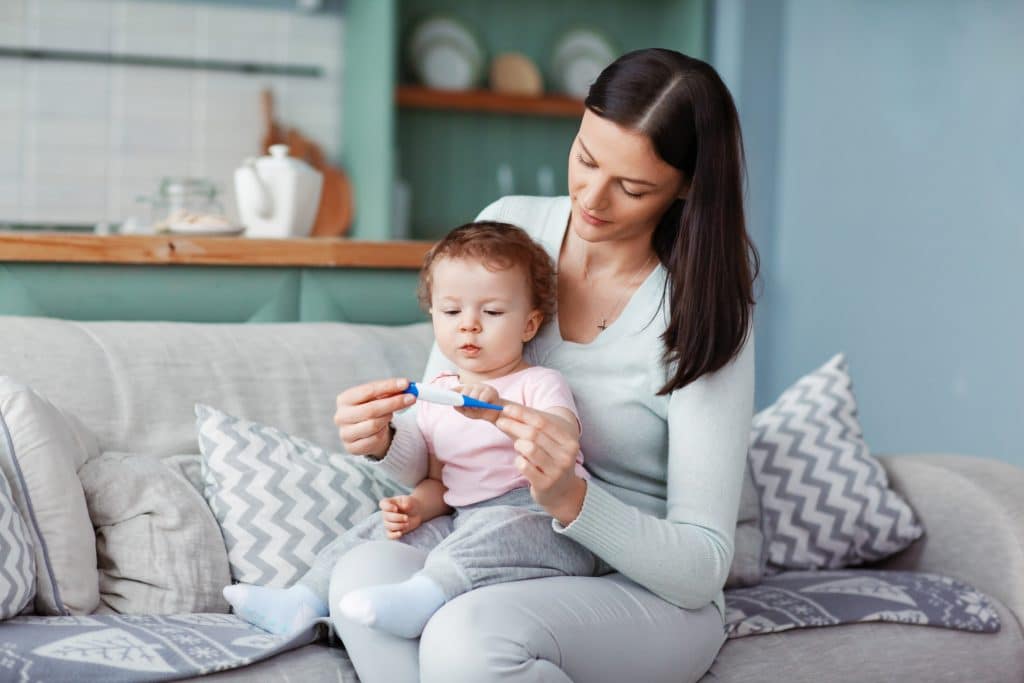Protecting your child from Malaria
What is Malaria?
Malaria is a common mosquito-borne infectious disease. It is characterized by fever (high temperature), chills, sweating and flu-like symptoms in toddlers. If you don’t treat the disease within the time, it can be life-threatening. Malaria can be a serious illness in babies and young children. It is preventable and curable.1
How does malaria spread in babies and toddlers?
Malaria is caused by plasmodium parasites. Malaria is spread from one child to another by the bite of an infected female Anopheles mosquito called “malaria vector”. There are 5 parasite species that cause malaria in humans, and 2 of these species – P. falciparum and P. vivax – pose the greatest threat. (P. falciparum are common in Africa).1
Because the malaria parasite is found in red blood cells of an infected person, a person may also get malaria if he or she gets infected blood during a blood transfusion. Malaria isn’t air-borne like the flu, which means that you can’t get it from sitting near an infected person.
If a mum-to-be has malaria during pregnancy, it can be passed to her unborn baby either before or during delivery. This is called congenital malaria.
Your baby is less likely to get malaria in the first three months of his/her life. This is because of the immunity you gave your baby during your pregnancy and through your breastmilk. As he/she grows older, he/she loses that immunity, and his/her risk of having malaria increases. Your baby is also more likely to develop severe malaria, as his/her own immunity is not yet fully developed.
How common is malaria?
Malaria affects 3.3 billion people, or half of the world’s population, in 106 countries and territories. Malaria is the 3rd leading cause of death for children under five years worldwide, after pneumonia and diarrheal disease.2
Malaria is the 2nd leading cause of death from infectious diseases in Africa, after HIV/AIDS. Almost 1 out of 5 deaths of children under 5 in Africa is due to malaria.2
Is malaria seasonal?
Malaria occurs all year round, but the number of cases does shoot up during and just after the rainy season. This is because warm humid weather and stagnant water provide a perfect breeding ground for mosquitoes.
What are the symptoms of malaria in babies and toddlers?
Symptoms usually start showing about eight days to three weeks after being bitten by an infected mosquito, but they can appear earlier or later.4
Look out for these symptoms:
- Fever
- Shivering
- cough and cold
- Irritability and drowsiness
- Poor appetite
- diarrhea, often with green stools
- Sleeplessness
- vomiting
- Stomach pain
- Some young children have a low body temperature (hypothermia) instead of a fever
- Seizures
- Rapid breathing
- Weakness4
What do I do if my child has symptoms of malaria?
Most of the symptoms of malaria are also common to the flu. So, if your child comes down with fever and chills, you need to contact your doctor right away.
Only a blood test to check for malaria parasites will confirm if it is malaria. If your doctor thinks that your child has malaria, he is likely to start treatment while waiting for the blood test results to come through. Getting to the doctor quickly is the best way to keep your child safe.4
If malaria is diagnosed, your child will need:
- Plenty of rest and fluids
- Healthy food
- Frequent sponging to bring the fever down
- Infant paracetamol to reduce his/her fever and to keep him/her comfortable. Always check with your doctor on the dosage instructions.
If he/she also suffers from convulsions, dehydration or loss of consciousness, he/she might have to be hospitalized.
In addition, your doctor will give your child treatment with antimalarial drugs. Depending on the type of malaria that your child has, and its severity, your doctor may prescribe a single drug or a combination of medicines.4
Make sure you give your child all the treatment in the right doses. Your child will start feeling much better within a couple of days of starting it, but it’s very important to complete the course.
If your child has severe malaria and needs to be treated in hospital, he/she may have medicines given via an infusion (intravenous) or by injection. Sometimes, if the medicine cannot be given through veins, it is given rectally. A child with malaria may be ill for a week and up to 10 days.
What are the long-term effects of malaria on my child?
More research needs to be done, but severe malaria in children can have longer term effects on children’s physical and cognitive development. This makes it even more important to act quickly if you suspect your child may have malaria.4
How can I reduce the risk of my child having malaria?
As mosquitoes cause this disease, it is important to keep mosquitoes at bay. Try to keep your home and surroundings free of mosquito breeding grounds, such as stagnant water.
Remove empty containers or old flowerpots where water can collect, especially in the rainy season. Add a few drops of kerosene oil to coolers, open drains, small ponds and other places where water tends to collect.
You can follow other preventive measures:
- Dress your child in light-coloured clothing. Dark colours attract mosquitoes.
- Dress him/her in long-sleeved and full length garments to avoid skin exposure.
- As far as possible stay in air-conditioned or cool areas. Mosquitoes do not thrive in cold temperatures.
- Use an age-appropriate mosquito repellent and following the directions on the label.
- Use mosquito nets while sleeping.
- Install mosquito meshes on your doors and windows.
- You could try using some mosquito repelling essential oils such as lemongrass, citronella, neem, lavender, and eucalyptus3. These are thought to repel mosquitoes, but they may be less effective than commercial repellents, and their effects are not long-lasting.
- Regular fumigation especially around your home and neighborhood also stops mosquitoes from breeding.
- Keeping your child well away from hedges and bushes when in the park. Mosquitoes are often found in these areas. Always protect your child with an age-appropriate mosquito repellent.6
With such effective precautionary measures, parents can easily safeguard their toddler from the life-threatening disease of Malaria.
Vaccines against malaria
RTS,S/AS01 (RTS,S) is the first and, to date, the only vaccine to show partial protection against malaria in young children. It acts against P. falciparum, the deadliest malaria parasite globally and the most prevalent in Africa. Among children who received 4 doses in large-scale clinical trials, the vaccine prevented approximately 4 in 10 cases of malaria over a 4-year period.1
In view of its public health potential, WHO’s top advisory bodies for malaria and immunization have jointly recommended phased introduction of the vaccine in selected areas of sub-Saharan Africa. The vaccine will be introduced in 3 pilot countries – Ghana, Kenya and Malawi – in 2019.
The pilot program will address several outstanding questions related to the use of the vaccine in real-life settings. It will be critical for understanding how best to deliver the required four doses of RTS,S; the vaccine’s potential role in reducing childhood deaths; and its safety in the context of routine use.
This WHO-coordinated program is a collaborative effort with ministries of health in Ghana, Kenya and Malawi and a range of in-country and international partners, including PATH, a non-profit organization, and GSK, the vaccine developer and manufacturer.1
- WHO. Malaria. 2019. https://www.who.int/news-room/fact-sheets/detail/malaria
- CDC. About Malaria Frequently Asked Question. Centre for Disease Control and Prevention. 2017. https://www.cdc.gov/malaria/about/faqs.html
- Maia MF, Moore SJ. Plant based Insect repellents: a review of their efficacy, development and testing. Malaria Journal, 10 (Suppl 1), S11. 2011.
- WHO. Malaria in Infants. 2018. World Health Organization: https://www.who.int/malaria/areas/high_risk_groups/infants/en/
Further Reading
Your child’s immunity is in a rapid development phase and is challenged by his environment and kindergarten or school. It is important to ensure he gets the right start through the right nutritional support.
The flu is a viral infection of the nose, throat and lungs, which can cause serious complications in children under five.
جهة الاتصال غير متوفرة





